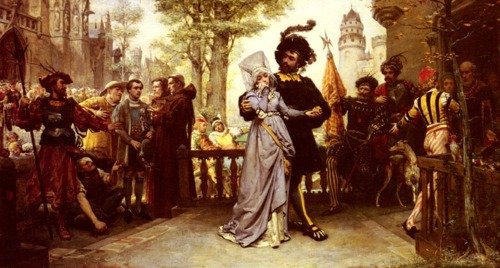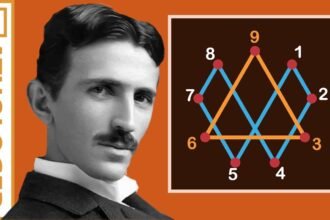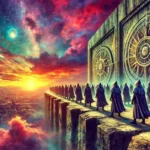Introduction to Prima Nocta
Prima Nocta, a term that translates from Latin to “first night,” has long been associated with a controversial and often debated historical practice. According to popular belief, it refers to the supposed right of a feudal lord to spend the first night with a newlywed bride among his subjects. This concept has been the subject of historical debates, cultural reinterpretations, and fictional narratives for centuries. But how much of this is rooted in fact, and how much is a product of myth and storytelling?
In this article, we will delve deep into the origins, historical context, and cultural significance of Prima Nocta. We’ll explore how the concept has been portrayed over time and why it continues to captivate the imagination of historians, writers, and the general public. By the end, you’ll have a thorough understanding of this enigmatic topic.
The Origins of Prima Nocta
What Is Prima Nocta?
Prima Nocta, also known as “droit du seigneur” in French or “ius primae noctis” in Latin, is often described as a medieval custom. The idea suggests that feudal lords had the legal or customary right to sleep with the brides of their serfs or tenants on their wedding night. This alleged practice has been depicted in literature, films, and folklore, painting a vivid, albeit controversial, picture of feudal society.
However, it’s essential to note that the concept of Prima Nocta is not supported by substantial historical evidence. While some scattered references exist in historical records, the widespread practice of such a custom remains largely unsubstantiated. Many historians argue that Prima Nocta is more a product of imagination and propaganda than a reflection of actual medieval customs.
Historical Context and First Mentions
The earliest mentions of Prima Nocta can be traced back to ancient civilizations rather than medieval Europe. Some scholars point to the Code of Hammurabi, an ancient Babylonian legal text, which contains references to certain privileges of the ruling class. However, there is no direct evidence that these privileges included the “first night” right.
In medieval Europe, the idea of Prima Nocta appears sporadically in literature and legal texts. Notably, it was referenced in 16th-century Scottish and French writings, often in the context of criticizing the excesses of feudal lords. These mentions, however, are more satirical or polemical than factual. It seems that the concept was used as a rhetorical device to highlight the perceived tyranny of the ruling class rather than document an actual practice.
Was It Ever Real?
The lack of concrete evidence for Prima Nocta has led many historians to dismiss it as a myth. While feudal lords did enjoy various privileges over their tenants, these were typically economic or administrative rather than sexual. The idea of Prima Nocta may have been exaggerated or fabricated entirely as a means of demonizing feudal rulers or creating sensationalist narratives.
Prima Nocta in Literature and Folklore
The Role of Fiction in Shaping Perception
One of the primary reasons Prima Nocta remains so well-known is its portrayal in literature and folklore. The concept has been a staple of sensational storytelling, often used to underscore the brutality and injustice of feudal systems. From medieval ballads to modern novels, Prima Nocta has been depicted as a symbol of oppression and abuse of power.
A notable example is the use of Prima Nocta in William Shakespeare’s play Henry VI, Part 2. Although not directly mentioned, the play alludes to the abuses of power by the nobility, which align with the themes associated with Prima Nocta. Similarly, the concept has appeared in countless novels, plays, and operas, often serving as a dramatic plot device.
Hollywood and the Reinforcement of the Myth
In modern times, Hollywood has played a significant role in perpetuating the idea of Prima Nocta. One of the most famous examples is the 1995 film Braveheart, directed by and starring Mel Gibson. In the movie, Prima Nocta is depicted as a cruel policy enforced by the English against the Scots, serving as a rallying point for rebellion. While the film’s portrayal is undeniably compelling, historians have criticized it for its historical inaccuracy.
The inclusion of Prima Nocta in such a popular film has cemented the concept in the public consciousness. Despite its dubious historical basis, the dramatization of Prima Nocta in Braveheart and similar works has contributed to its enduring appeal as a symbol of feudal oppression.
Folklore and Oral Traditions
Beyond literature and film, has also appeared in folklore and oral traditions. Tales of wicked lords and their outrageous demands often include references to the “first night” right. These stories, while entertaining, are best understood as moral fables or cautionary tales rather than historical accounts. They reflect societal anxieties about power, authority, and justice, using Prima Nocta as a narrative device to explore these themes.

The Societal and Cultural Implications
A Symbol of Feudal Oppression
Prima Nocta has often been used as a metaphor for the abuses of power inherent in feudal systems. Whether or not it was ever practiced, the concept embodies the fear and resentment that many people felt toward the feudal hierarchy. It serves as a stark reminder of the potential for exploitation when power is concentrated in the hands of a few.
In this sense, has a broader significance beyond its historical accuracy. It highlights the tensions between the ruling class and the peasantry, providing a lens through which to examine issues of power, privilege, and resistance. The concept also underscores the importance of questioning historical narratives and distinguishing fact from fiction.
Gender Dynamics and Feminist Interpretations
From a feminist perspective, Prima Nocta raises important questions about gender, power, and agency. The idea of a lord claiming sexual rights over a bride underscores the vulnerability of women in patriarchal societies. While the historical reality of Prima Nocta is dubious, the concept resonates with broader patterns of gender-based violence and exploitation throughout history.
Feminist scholars have used as a case study to explore the intersections of gender, class, and power. By examining the myth and its implications, they shed light on the ways in which patriarchal systems have perpetuated inequality and oppression. This analysis provides valuable insights into the historical and cultural dynamics that continue to shape gender relations today.
Modern Interpretations and Relevance
In contemporary discussions, serves as a cautionary tale about the dangers of unchecked power. While the concept may not have been a historical reality, its enduring presence in popular culture and historical discourse highlights its symbolic importance. Prima Nocta reminds us of the need to critically examine authority and advocate for justice and equality.
Debunking the Myths
Historical Evidence and Scholarly Perspectives
One of the main challenges in studying Prima Nocta is the lack of reliable historical evidence. Despite its widespread depiction in literature and media, there is little to no documentation of the practice in historical records. This absence has led many historians to conclude that Prima Nocta is a myth rather than a historical reality.
Scholars have examined various sources, including legal codes, chronicles, and contemporary accounts, in search of evidence for Prima Nocta. While some references exist, they are often vague, contradictory, or satirical in nature. This lack of clarity has fueled debates about the concept’s origins and significance, with many experts arguing that it is more a product of imagination than fact.
Misinterpretations and Propaganda
The myth of Prima Nocta may have been perpetuated for various reasons, including propaganda and political agendas. In some cases, it was used to discredit feudal lords or monarchs by portraying them as tyrannical and immoral. In others, it served as a tool for dramatizing social injustices and rallying support for reform or rebellion.
Misinterpretations of historical texts have also contributed to the persistence of Prima Nocta. Translational errors, cultural biases, and sensationalist storytelling have all played a role in shaping the narrative. By critically analyzing these factors, historians can better understand how and why the myth of has endured.
Lessons from the Prima Nocta Myth
While may not have been a historical reality, its myth offers valuable lessons about the power of storytelling and the construction of historical narratives. It highlights the importance of critical thinking and the need to separate fact from fiction. By examining the origins and implications of Prima Nocta, we gain a deeper understanding of how myths and legends shape our perceptions of history and society.
Conclusion: Prima Nocta in Perspective
Prima Nocta is a fascinating and complex topic that continues to captivate the imagination of scholars, storytellers, and audiences alike. While its historical reality is highly questionable, its cultural significance is undeniable. As a symbol of feudal oppression, gender inequality, and the abuse of power, Prima Nocta serves as a powerful reminder of the importance of justice, equality, and critical inquiry.
By unraveling the myths and exploring the historical context of Prima Nocta, we gain valuable insights into the dynamics of power and privilege. Whether viewed as a cautionary tale, a rhetorical device, or a cultural artifact, Prima Nocta remains a compelling subject for discussion and reflection. Its enduring legacy reminds us of the need to question authority, challenge injustice, and seek truth in all its forms.
















